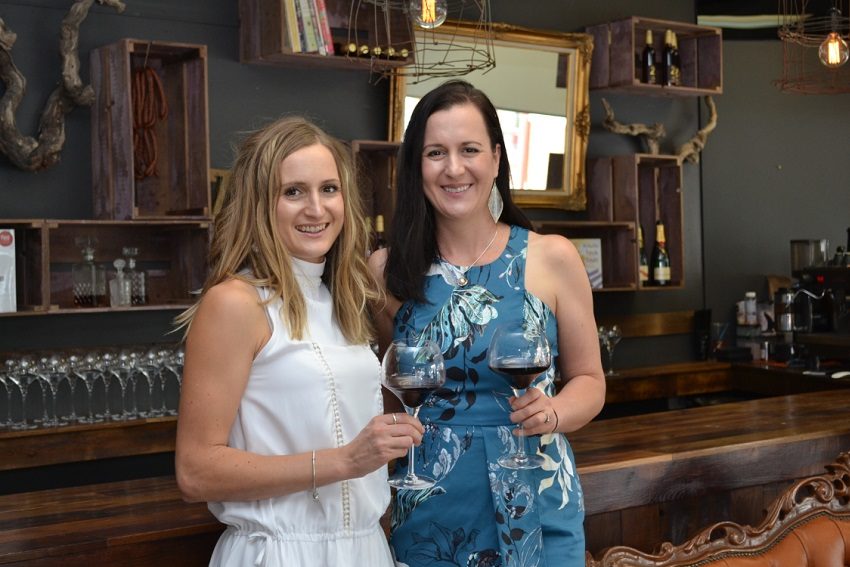Z Wine's sister act pushes old vine Grenache in a new direction

Grenache — or if you want to play the ethnic authenticity card, Garnacha — is a variety that has traditionally sung in the chorus, but which is now becoming more and more like a diva.
 The grape was among the Spanish varieties that the great promulgator of the vine, James Busby, brought out as cuttings in the early 19th century. Busby actually got his Grenache over the Pyrenees in Perpignan and he enthused about the grape’s “strong impregnation with aroma”, but in Australia its smells and flavours have remained very much in the background pretty much ever since.
The grape was among the Spanish varieties that the great promulgator of the vine, James Busby, brought out as cuttings in the early 19th century. Busby actually got his Grenache over the Pyrenees in Perpignan and he enthused about the grape’s “strong impregnation with aroma”, but in Australia its smells and flavours have remained very much in the background pretty much ever since.
Used originally in port wines, then to soften Shiraz, over the past 20 years it has garnered favourable notices for its role in Rhone-inspired Grenache-Shiraz-Mourvedre blends. Now, almost overnight, it’s singing solos, lots of them, especially in the Barossa.
A Grenache from Turkey Flat Vineyards won last year’s Jimmy Watson trophy, while a look back at recent years of Hot 100 Wines shows straight Grenaches from St Hallett, Tscharke, Cirillo and Yelland & Papps all finding spots in the top 10.
So why is the grape attracting critical acclaim and strong demand? Barossa winemaker Janelle Zerk runs Z Wine with her sister Kristen, and their range of wines contains not one, but two, award-wining varietal Grenaches. Their 2017 August Old Vine Grenache came fifth in the latest Hot 100, while their 2016 Rustica Grenache snared one of only eight golds in James Halliday’s inaugural Grenache Challenge.

Zerk says much of the wine’s winning appeal derives from availability of fruit from aged vines. Like many other popular examples of Grenache, the August is made in the joven, or youthful, style. Picked as soon as it is fully ripe, it spends a short time on skins and only six months in the barrel.
If such a wine is made from young vines, the result, Zerk says, is like lolly-water. Having vines more than 70 years old, however, brings layers of flavour. “There’s nice crushed strawberry, violets and a bit of spice — that white pepper — and in the ferment we can do a bit of whole bunch to add complexity. It’s a really fruit-driven wine, that’s why it’s so perfumed,” she says.
“We sell a lot of it in the cellar door — it’s smooth, and it’s got a fleshy mouthfeel and those silky tannins. I say to people, if they want to know what is meant by terms like fleshiness and silkiness, this wine is it.”
If the 700 hectares of Grenache in the Barossa are still heavily outnumbered (at around 13 to one) by Shiraz and Cabernet-Sauvignon, Z Wine is altogether a rarer beast — the only other Australian winery run by sisters that leaps to mind is Bremerton at Langhorne Creek. While the Zerk family has grown vines on a mixed farm near Lyndoch for five generations, the sisters are the first in the family to make their own wine: Janelle studied oenology at Waite before working around the country, then the world (stops included Burgundy, Sonoma and Tuscany); Kristen took a degree in wine marketing.

The sisters’ first batch of wines, made more than 10 years ago, utilised grapes from the family estate, but they now draw on a network of eight local growers that includes a Riesling vineyard in Eden Valley. Their Grenache grapes are grown in Light Pass, between Nuriootpa and Angaston on the eastern side of the Valley floor.
Headquarters for Z Wine is in Tanunda, in a Murray Street premises that doubles as a cellar door. By night, from Thursday to Sunday, it morphs into a wine bar that is proving popular with both tourists and locals, and Zerk juggles her children with winemaking and shifts at Murray Street. She says club lounges and chesterfields make it an ideal place to relax and taste the wines (they do actually make a GSM too) with a platter of local produce. You can make up your own mind as to whether James Busby was right about the bouquet of Grenache.
I’m with Jimmy.